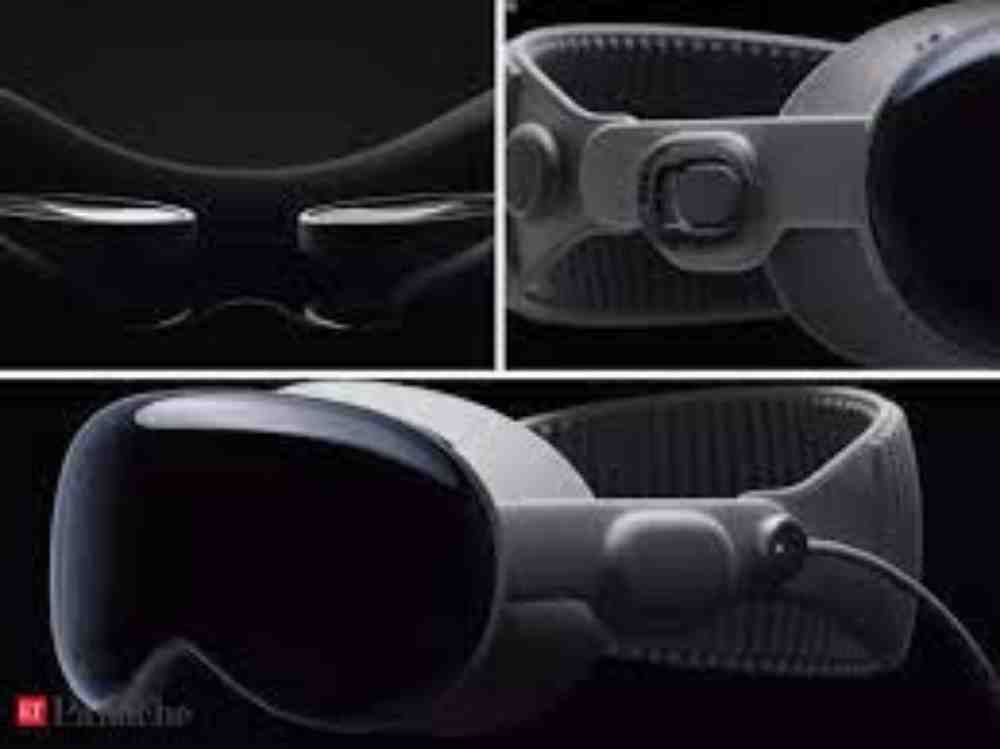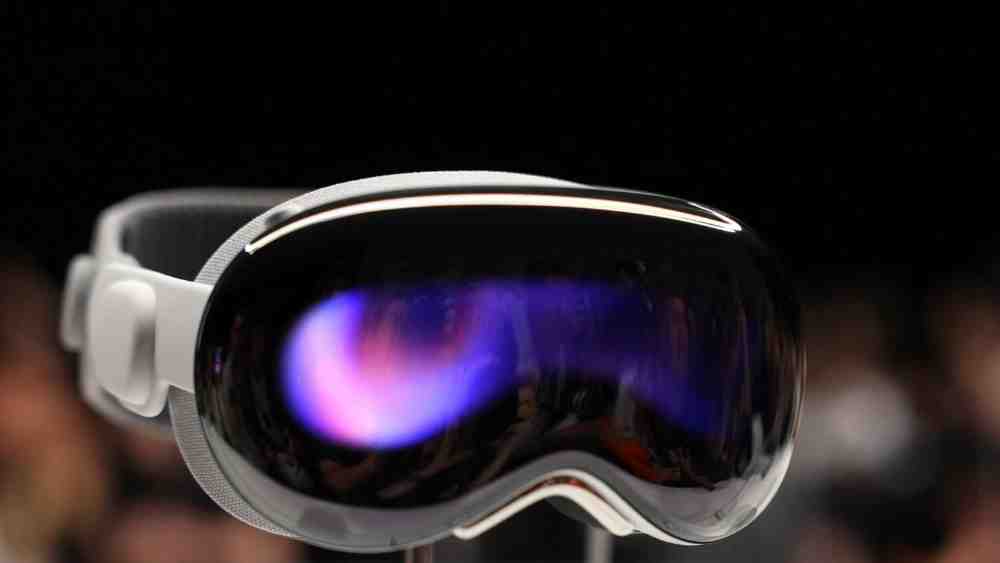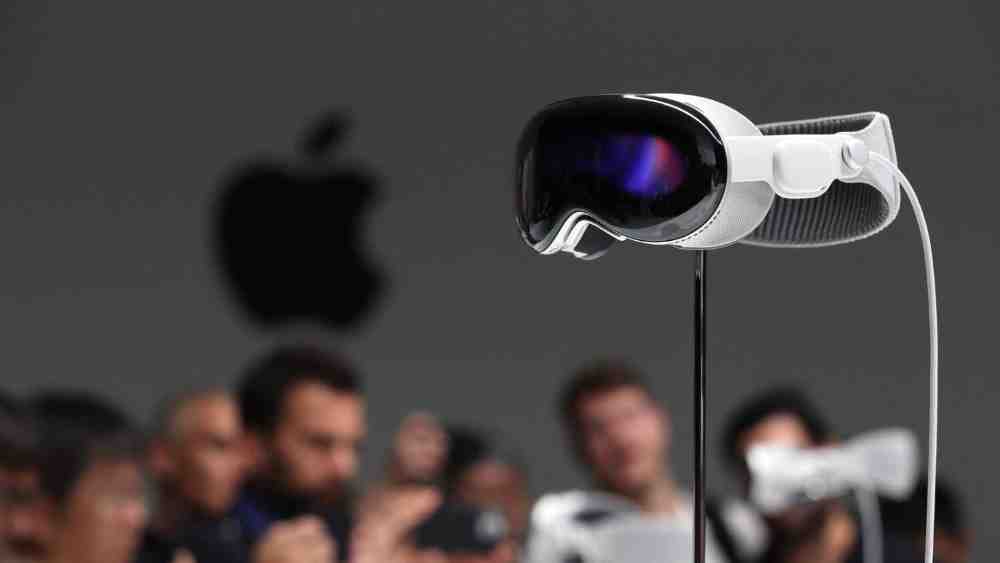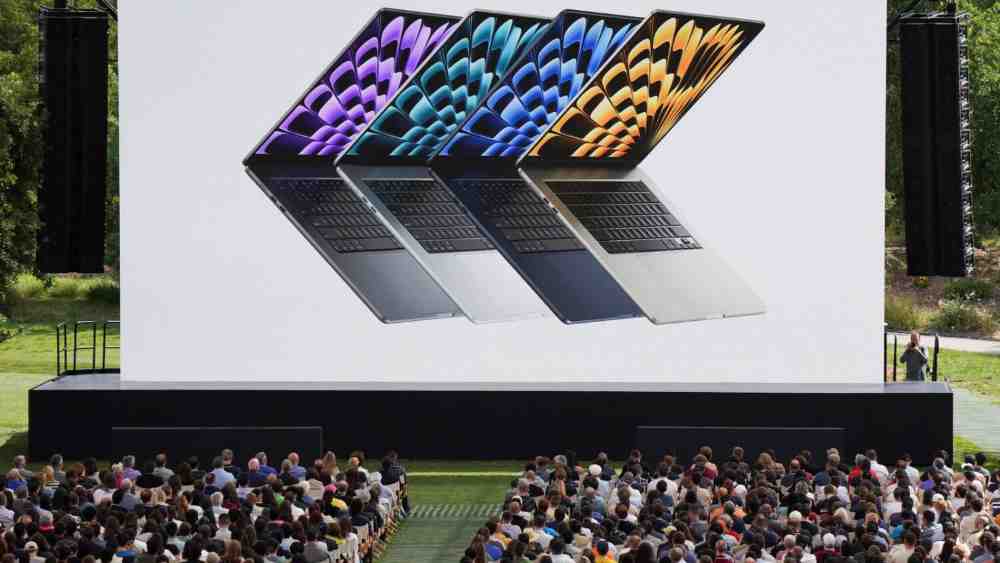Apple Vision Pro: Augmented Reality Redefined with Revolutionary Headset.
At its annual software developer conference on Monday, Apple Inc. unveiled the Apple Vision Pro, an augmented reality headset. This was Apple’s first significant move into a new product category since the Apple Watch was introduced nine years ago.
The most expensive headset in Meta’s line of mixed and virtual reality devices, which currently dominate the AR/VR market, will cost $3,499 for Vision Pro. Apple’s headset will be accessible right on time one year from now in the US with additional nations coming later in 2024.

Apple did not make any big announcements about generative AI products like Google’s Bard search engine or ChatGPT, but it did quietly add AI to a few smaller features like live voicemail transcriptions. It stated that Vision Pro users will be able to select content with their eyes inside the goggles, click with their fingers together to scroll, and use a three-dimensional camera and microphone system to capture videos and pictures that can later be viewed in 3D.
The device differs most visually from Meta’s headsets in that it has an exterior display that connects the user’s eyes to people outside the room. When a user is fully immersed in a virtual world, the exterior screen dims. An advancement in augmented reality over Meta’s devices, which display a more basic video feed of the outside world, the headset will show both the user and the outside person to each other when a person approaches a user who is in full virtual mode.

Tim Cook, CEO of Apple, stated, “It’s the first Apple product you look through, not at.” Apple will test a market full of devices that have not yet gained consumer traction with the launch of the headset, putting it directly in competition with Meta Platforms, which owns Facebook. Apple did not mention the digital social worlds that Zuckerberg has described in its announcement, but it did emphasize the novelty of the product’s augmented reality features and the sports and entertainment partnerships it would offer.
The new chip in the headset, codenamed R1, is designed to process data from its sensors in a matter of seconds. Apple claimed that Unity, a technology company that works with game developers, and Adobe, Microsoft, and Microsoft had been collaborating on the integration of their apps into the new headset. Following the announcement, Unity shares rose 17 percent.

The collection of movies and television shows from Apple TV+, as well as Walt Disney’s Disney+ streaming service, will be available. In addition, the company demonstrated how the headset can function similarly to a conventional computer with multiple displays when paired with a trackpad and keyboard. According to Carolina Milanesi, an analyst at Creative Strategies, “the core difference for me is that Zuckerberg is trying to create a virtual world that he wants us to be in, and it seems to me that Apple wants to keep us still anchored in our world and just augment it.”
With an external battery, the Vision Pro can be used for two hours, which Apple claimed would make the device lighter on the user’s head. However, the device cannot be used on its own and must be connected to a battery pack or the wall. Meta’s first in class Journey Ace blended reality gadget, which mixes augmented reality with this present reality video feed, offers around two hours of battery duration straightforwardly on the headset, without an outer battery pack.
Additionally, Meta provides Microsoft apps for its Quest devices. Prior to the launch, the manufacturer of the iPhone saw its shares rise by 2% to a record high of $184.95. After Apple removed Intel chips from its most powerful desktop, Intel fell 3.9%.
The extent to which Apple’s and Meta’s perspectives on the virtual reality market overlap is the focus of both investors and tech enthusiasts. Mark Zuckerberg, the chief executive officer of Meta, has presented his concept for the use of headsets to enter and exit a “metaverse,” where individuals can meet virtually to work, play, and spend. Sony Group Corp. and Pico, which is owned by ByteDance, both recently introduced virtual reality devices.
According to IDC, a research firm, businesses sold 8.8 million headsets in total in 2018, down 20.9% from 2021. Sales more than halved in the first quarter of 2023.
Apple also announced a 15-inch MacBook Air equipped with an M2 processor chip designed by Apple. The six-speaker laptop will be available next week and cost $1,299 starting price. The 13-inch MacBook Air will drop to $1,099. Apple refreshed its Macintosh Studio work area machine, saying its new M2 Ultra chip can deal with man-made reasoning work that adversary chips need more memory to deal with.
Apple likewise presented another form of the Macintosh Genius, its most elevated performing work area, with a M2 Ultra chip and a sticker price beginning at $6,999. Similar to how Apple improved the performance of its M1 chips, the M2 Ultra chip is essentially made up of two of the largest M2 chips. The Mac Pro was the last computer in Apple’s lineup to use an Intel chip up until Monday. John Ternus, Apple’s senior vice president of hardware engineering, stated, “For PC users, there’s never been a better time to switch to a Mac.”

The new updates include tweaks to messaging, enhancements to high-end machines aimed at the developer crowd at Monday’s event, and a new Mac Air aimed at a much wider range of customers, including potential Apple switchers. Apple acquainted little upgrades with its iOS programming, some focused on little disturbances like a “NameDrop” component to all the more effectively share contact data and others zeroed in on wellbeing and security, similar to a registration element to let contacts know when a client has shown up securely at an objective.
Apple said that it was working on the autocorrect inclusion on iPhone consoles. “The keyboard will also learn it when you just want to type a ducking word,” Apple’s software Chief Craig Federighi stated. Apple’s auto correction of a common slang term to “ducking” is well-known.
